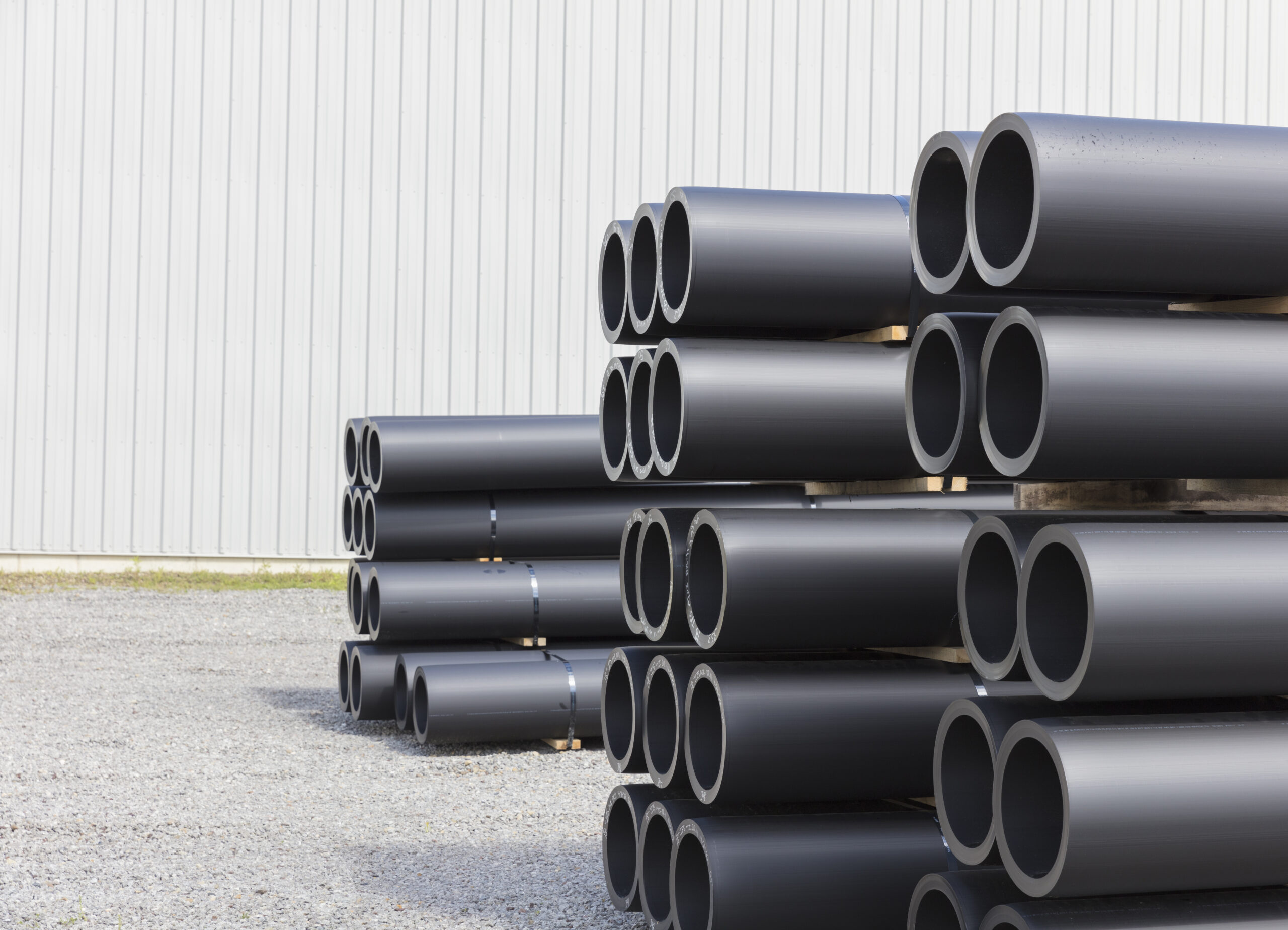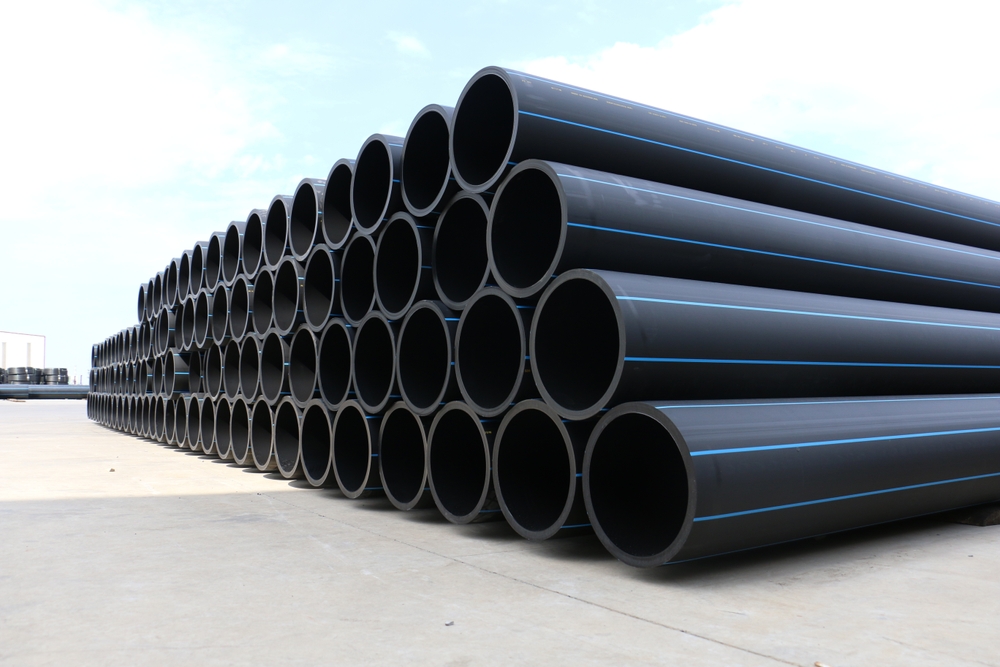American Plastics HDPE Pipe for Oilfield: Built for Harsh Conditions
Explore the Production Refine Behind High-Quality HDPE Pipe and Its Applications
The manufacturing process of high-quality HDPE pipelines is elaborate and methodical. It begins with the option of basic materials that improve performance. Following this, ethylene undergoes polymerization to form material, which is after that shaped with extrusion. Quality assurance is extremely important, ensuring that the end product satisfies rigorous criteria. The journey of HDPE pipelines does not finish with production. Their applications across numerous markets expose a wider value worth analyzing.
Comprehending HDPE: Residences and Advantages

High-density polyethylene (HDPE) is a flexible thermoplastic known for its sturdiness and resistance to numerous ecological factors. This product shows excellent tensile strength, making it suitable for requiring applications. Its low-density structure contributes to a light-weight product, assisting in ease of taking care of and installment. HDPE additionally showcases remarkable resistance to chemicals, which decreases degradation when revealed to harsh compounds.
The material's low moisture absorption additionally improves its long life, making it suitable for usage in pipelines and tank. In addition, HDPE is immune to ultraviolet (UV) radiation, making sure that products preserve their integrity also when exposed to sunlight. Furthermore, its adaptability permits the production of complex shapes without jeopardizing strength. The environment-friendly nature of HDPE, commonly originated from recycled materials, includes in its allure, advertising sustainable techniques in production. Overall, these properties and benefits make HDPE a recommended choice for numerous commercial and customer applications.
Raw Product Selection for HDPE Production
The choice of basic materials for HDPE production is vital to confirm the final product satisfies the desired specs and quality requirements. High-density polyethylene (HDPE) is largely produced from polymerized ethylene, stemmed from nonrenewable fuel sources such as natural gas or petroleum. The quality of these feedstocks substantially influences the mechanical and thermal residential properties of the final HDPE.
Additives likewise play a substantial role in improving HDPE's efficiency, consisting of anti-oxidants, UV stabilizers, and colorants, which boost durability and resistance to ecological aspects. The choice procedure need to consider not only the chemical make-up of the raw materials however additionally their processing attributes to ensure reliable production.
The sourcing of raw materials should prioritize sustainability and compliance with environmental guidelines, as liable techniques are necessary in today's market. Ultimately, cautious raw product selection lays the structure for creating high-quality HDPE pipes ideal for diverse applications.
The Extrusion Process: Forming HDPE Pipeline
The extrusion procedure plays a vital duty fit HDPE pipes, beginning with precise product preparation techniques that guarantee optimal circulation and consistency. Just as important is the layout of the die, which straight affects the last measurements and surface quality of the pipe. Together, these variables contribute substantially to the performance and quality of HDPE pipeline production.
Material Preparation Methods
Effective production of HDPE pipes begins with careful material preparation methods, especially the extrusion procedure. During this stage, high-density polyethylene material is very first dried out to eliminate moisture, making sure suitable circulation characteristics. The resin is then fed right into the extruder, where it goes through heating and melting, transforming right into a thick state. This home heating procedure is thoroughly managed to preserve the product's integrity and performance. The liquified HDPE is required through a die, forming it right into a constant pipe type. Appropriate temperature management during extrusion is crucial, as it directly impacts the product's residential or commercial properties and the end product high quality. As soon as shaped, the HDPE pipeline is cooled and cut to specified lengths, prepared for succeeding handling and applications.
Die Layout Value
Accuracy in die design plays an important duty in the extrusion process of HDPE pipelines. The die serves as the final shaping tool, straight influencing the pipe's dimensions, wall surface density, and surface coating. A properly designed die assurances uniform material flow, lowering flaws such as irregularities and weak points. The geometry of the die need to be optimized to fit the details buildings of HDPE, including its thickness and thermal habits during extrusion. In addition, the cooling price of the product as it goes through the die can considerably affect the pipeline's architectural stability. Spending in innovative die modern technology is vital for suppliers intending to create high-quality HDPE pipelines that satisfy sector standards and consumer assumptions.
Quality Assurance Measures in HDPE Production
Although various factors influence the quality of HDPE pipe manufacturing, reliable quality assurance procedures are essential to guarantee consistency and dependability in the last product. Trick high quality control techniques consist of extensive product examination, confirming that the raw polyethylene fulfills well-known requirements for pureness and thickness. During the extrusion process, criteria such as temperature, stress, and cooling time are carefully kept an eye on to maintain dimensional precision and architectural stability
On top of that, post-production screening is necessary; producers frequently conduct hydrostatic examinations to assess the pipe's stamina and resistance to stress. Aesthetic examinations for surface area issues further enhance high quality assurance. Qualification from appropriate criteria organizations, like ASTM or ISO, supplies an additional layer of reliability. By applying these thorough high quality control steps, manufacturers can minimize problems, enhance efficiency, and make certain that the HDPE pipelines meet the specific requirements of numerous applications, eventually resulting in customer fulfillment and depend on in the item.
Applications of HDPE Pipeline Throughout Industries
HDPE pipes are utilized throughout numerous industries because of their longevity and adaptability. In water circulation systems, they assure efficient shipment, while in wastewater monitoring, they provide trusted solutions for waste transport. Furthermore, farming watering networks gain from HDPE's resistance to rust and flexibility, making it a suitable option for modern-day farming practices.

Water Distribution Systems
A substantial number of markets rely upon high-density polyethylene (HDPE) pipes for effective water circulation systems. Known for their toughness and resistance to corrosion, HDPE pipelines are widely made use of in municipal water supply networks, farming watering, and commercial applications. Their lightweight nature facilitates very easy handling and installment, reducing labor expenses and time. Furthermore, HDPE pipelines can accommodate various stress degrees, making them ideal for both reduced and high-pressure systems. American Plastics HDPE Pipe Manufacturing. The versatility of the product enables smooth assimilation into existing facilities, reducing the need for considerable excavation. HDPE's resistance to chemical leaching guarantees that the water provided remains risk-free and tidy, making it an excellent option for preserving the quality of safe and clean water throughout different fields.
Wastewater Administration Solutions
Effective water circulation systems also lead the means for ingenious wastewater management options, where high-density polyethylene (HDPE) pipes play a substantial role. Distinguished for their durability and resistance to deterioration, HDPE pipelines are optimal for delivering wastewater in various setups. Their adaptability permits easy installment in intricate environments, minimizing the requirement for substantial excavation. Additionally, HDPE's smooth indoor surface area minimizes rubbing, enhancing circulation rates and efficiency. These pipelines are likewise immune to chemical leaching, guaranteeing that pollutants do not jeopardize the surrounding setting. Industries, municipalities, and treatment centers progressively depend on HDPE pipes for their reliability and longevity, making them a recommended option for contemporary wastewater management systems. This versatility highlights the critical significance of HDPE pipes throughout numerous applications.
Agricultural Irrigation Networks
Agricultural irrigation networks profit significantly from using high-density polyethylene (HDPE) pipes, which supply efficient and reputable water distribution to crops. HDPE pipes are lightweight, making them simple to transport and mount, while their versatility allows for numerous setups in diverse surfaces. These pipes demonstrate exceptional resistance to deterioration, chemicals, and UV radiation, making sure toughness in harsh agricultural settings. In addition, their smooth indoor surface lessens friction loss, enhancing water flow and lowering energy prices related to pumping. The long life of HDPE pipes, frequently surpassing 50 years, adds to reduce maintenance and substitute expenses. Farmers significantly depend on HDPE pipelines to boost watering performance and advertise sustainable farming practices, eventually leading to improved crop returns and resource conservation.

Future Trends in HDPE Pipeline Technology
As the need for lasting and effective infrastructure expands, improvements in HDPE pipeline technology are poised to change various industries. Arising fads include the assimilation of clever innovations, such as sensing units and IoT abilities, which promote real-time surveillance of pipe problems, minimizing maintenance prices and stopping leakages. Furthermore, the advancement of advanced manufacturing strategies, such as 3D printing, is allowing the production of facility, customized pipeline designs that satisfy details job needs.
In addition, the focus on recycling and circular economic climate techniques is driving the technology of HDPE pipes made from recycled materials, boosting sustainability. Boosted jointing approaches, such as electro-fusion and mechanical installations, are also enhancing setup effectiveness and reliability. The growing emphasis on environmental laws is pressing manufacturers to take on greener manufacturing processes, guaranteeing that HDPE pipes not only meet market criteria yet likewise foster an even more sustainable future for framework development.
Regularly Asked Inquiries
Exactly How Does HDPE Contrast to Other Plastic Materials?
HDPE exceeds numerous various other plastic materials regarding longevity, chemical resistance, and flexibility. Its reduced density and high tensile strength make it suitable for different applications, often surpassing options in both efficiency and durability.
What Are the Ecological Impacts of HDPE Manufacturing?
The environmental impacts of HDPE production consist of greenhouse gas emissions, power usage, and prospective contamination from making processes. Additionally, improper disposal can bring about soil and water contamination, raising concerns concerning lasting environmental effects.
Can HDPE Pipeline Be Reused?
Yes, HDPE pipes can be reused. Numerous centers approve used HDPE for processing, transforming it right into brand-new items. This reusing adds to sustainability efforts, decreasing plastic waste while conserving sources and energy in the production cycle.
What Is the Life Expectancy of HDPE Water Lines?

How Do Temperature Variations Affect HDPE Pipe Efficiency?
Temperature variants considerably impact HDPE pipe efficiency, affecting versatility and toughness. Heats can cause softening, while low temperature levels might trigger brittleness, eventually influencing the pipeline's longevity and suitability for get more info different applications in diverse atmospheres.